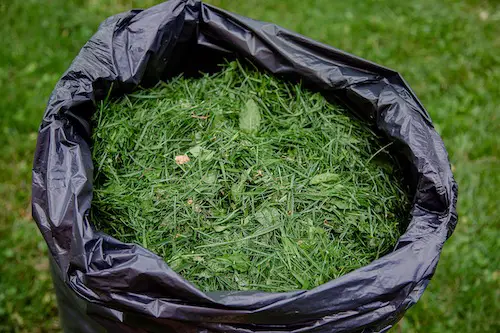Easy DIY Homemade Lawn Fertilizer Recipes: Keep Your Lawn Green and Lush
A lush green lawn is the dream of every homeowner. However, maintaining a healthy lawn can be expensive and time-consuming, especially when it comes to fertilizing. The good news is that you can make your own natural and effective lawn fertilizers using ingredients found in your kitchen and garden. These DIY fertilizers are not only cost-effective but also promote a healthier lawn and environment.
Easy DIY Homemade Lawn Fertilizer Recipes
- Grass Clippings Fertilizer – Instead of throwing away grass clippings, use them to fertilize your lawn. Spread the clippings evenly over your lawn and water thoroughly. The clippings will decompose and release nitrogen, phosphorus, and potassium, essential nutrients for a healthy lawn.
- Epsom Salt Fertilizer – Epsom salt is a natural source of magnesium and sulfur, which are essential nutrients for a healthy lawn. Mix 1 cup of Epsom salt with 5 gallons of water and apply to your lawn using a garden sprayer.
- Banana Peel Fertilizer – Banana peels are a rich source of potassium, which promotes strong root growth and disease resistance. Blend banana peels with water in a blender and apply to your lawn.
- Coffee Grounds Fertilizer – Coffee grounds are a great source of nitrogen and other essential nutrients for your lawn. Spread used coffee grounds evenly over your lawn and water thoroughly.
- Vinegar Fertilizer – Vinegar is a natural herbicide and a source of acetic acid, which can kill weeds and promote healthy grass growth. Mix 1 cup of vinegar with 1 gallon of water and apply to your lawn using a garden sprayer.
Grass Clippings Fertilizer
Ingredients:
- Grass clippings
Step-by-Step Instructions:
- After mowing your lawn, collect the grass clippings.
- Spread the grass clippings evenly over your lawn.
- Water your lawn thoroughly to help the clippings decompose.
- As the clippings break down, they will release nitrogen, phosphorus, and potassium, which are essential nutrients for a healthy lawn.

Epsom Salt Fertilizer
Ingredients:
- 1 cup Epsom salt
- 5 gallons of water
Step-by-Step Instructions:
- In a large container, dissolve 1 cup of Epsom salt in 5 gallons of water.
- Stir the mixture until the Epsom salt is completely dissolved.
- Using a garden sprayer, apply the Epsom salt fertilizer to your lawn, making sure to cover the entire area.
- Water your lawn after applying the fertilizer to help it penetrate the soil.
Banana Peel Fertilizer
Ingredients:
- Banana peels
- Water
Step-by-Step Instructions:
- Collect banana peels from your kitchen.
- Cut the banana peels into small pieces.
- Place the banana peels in a blender.
- Add some water to the blender and blend until you have a smooth paste.
- Dilute the banana peel paste with more water to create a liquid fertilizer.
- Pour the liquid fertilizer onto your lawn, ensuring even coverage.
- Water your lawn after applying the fertilizer to help it seep into the soil.
Coffee Grounds Fertilizer
Ingredients:
- Used coffee grounds
Step-by-Step Instructions:
- Save your used coffee grounds after brewing your morning coffee.
- Allow the coffee grounds to dry completely.
- Sprinkle the dried coffee grounds evenly over your lawn.
- Water your lawn thoroughly to help the coffee grounds release their nitrogen and other nutrients into the soil.

Vinegar Fertilizer
Ingredients:
- 1 cup vinegar
- 1 gallon of water
Step-by-Step Instructions:
- In a large container, mix 1 cup of vinegar with 1 gallon of water.
- Stir the mixture well to ensure the vinegar is evenly distributed.
- Using a garden sprayer, apply the vinegar fertilizer to your lawn, focusing on areas with weeds.
- Be cautious not to overspray or apply the vinegar fertilizer to healthy grass, as it can be harmful.
- Water your lawn after applying the fertilizer to dilute the vinegar and prevent damage to the grass.
Frequently Asked Questions
Are homemade lawn fertilizers as effective as store-bought fertilizers?
Yes, homemade lawn fertilizers can be just as effective as store-bought fertilizers, and they are often cheaper and more environmentally friendly.
What time of year should I fertilize my lawn?
The best time to fertilize your lawn is in the early spring or fall when the grass is actively growing.
How often should I fertilize my lawn?
It depends on the type of grass and the climate in your area. Generally, it’s recommended to fertilize your lawn every 6-8 weeks during the growing season.
Can I use too much fertilizer on my lawn?
Yes, over-fertilizing your lawn can lead to burned grass, excess runoff, and pollution. Always follow the recommended application rates and use a spreader to ensure even coverage.
Can I use homemade fertilizers on any type of grass?
Yes, you can use homemade fertilizers on any type of grass. However, it’s always a good idea to do a soil test to determine the pH and nutrient levels of your soil.
Are homemade fertilizers safe for pets and children?
Yes, homemade fertilizers are generally safe for pets and children. However, always follow the application instructions and keep pets and children off the lawn until the fertilizer has been watered in.
Conclusion
In conclusion, maintaining a healthy and green lawn doesn’t have to be a burden on your wallet or the environment. With these easy DIY homemade lawn fertilizer recipes, you can create effective and natural fertilizers using ingredients readily available in your kitchen and garden. By following the step-by-step instructions provided, you’ll be able to nourish your lawn, promote healthy growth, and enjoy the vibrant beauty of a lush, green landscape.
Remember, DIY fertilizers are not only cost-effective but also help reduce the use of harmful chemicals that can negatively impact the environment. So, why not give these homemade fertilizer recipes a try? Your lawn and the planet will thank you.

